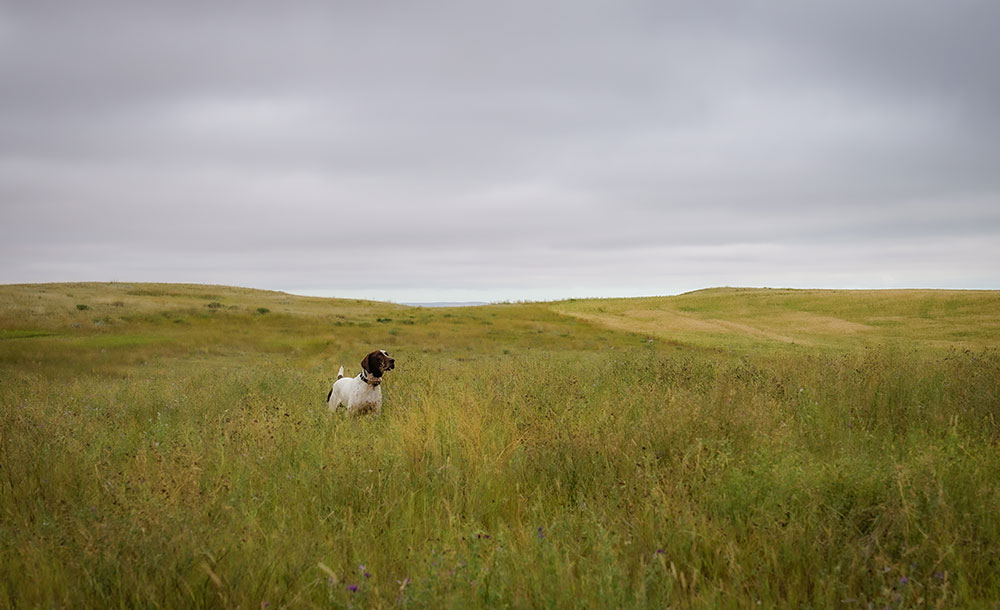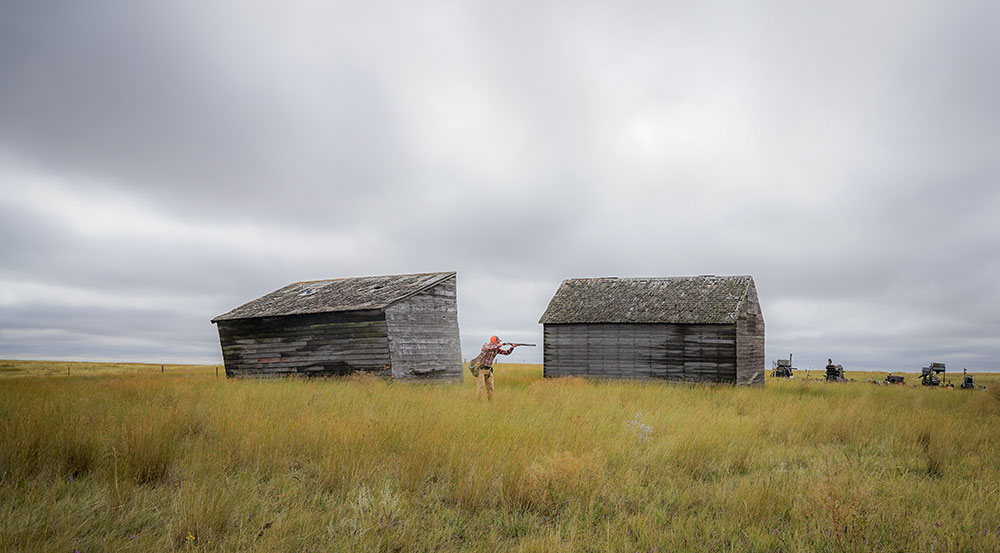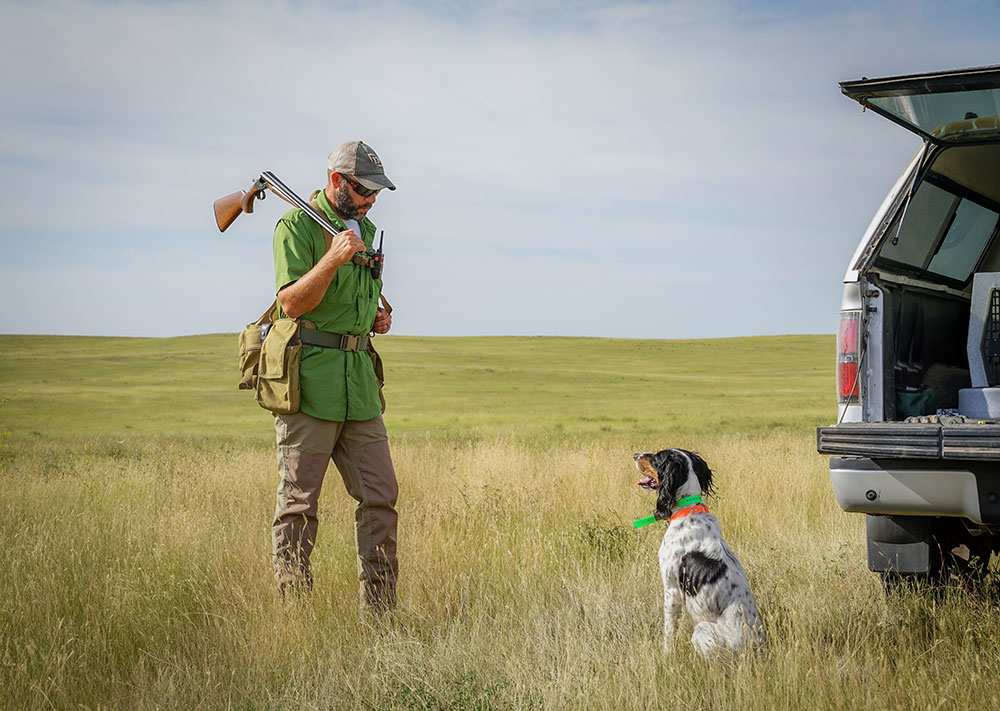For the Love of Huns

Some people pour their heart and soul, not to mention their hard-earned money, into certain passions in their life. They exhaustively pursue these endeavors no matter the time or resources that it takes to achieve the goals for which they seek. From the outside, the effort is often confusing.
Why put forth the energy? Is it the pursuit of happiness or the feeling of success? Is it to relive old memories or to make new ones? How can enduring one simple moment in life, something seemingly nondescript, be so rewarding that you revel in that memory forever?
You may never fully understand the unknown until you experience it yourself.

We saved the old farmstead for the last hunt of opening day. As we approached, the aged house stood strong with its grayed wood showing the patina of yesteryear. Outbuildings and long-idled implements surrounded the yard. Hedgerows lined the grounds to the West to block the winter winds with a knee-high, grassy understory that grew tall with the birds it protected each season. Although they try their best to not be forgotten, homesteads like this are abandoned and neglected until the buildings eventually join the dust on the ground.
Only the eye of an auspicious upland hunter can appreciate the beauty of such a place. We put the young, eager setter down that evening, not knowing the potential that was ahead just up the hedgerow. White and ticked with black throughout the coat, her speed of gait uttered poetry across the prairie landscape. We believed we’d find wild birds there.
This was Hun country.
The location of this hunt reminded me of the writings of Ben O. Williams about his unapologetic love for Hungarian partridge and the places where you find them. In “The Old Homestead,” for the upcoming December-January 2020 issue of Covey Rise, Ben wrote:
I’m walking—watching my hardworking pointing dogs cover a 120-acre homestead that I occasionally hunt, but dearly love. A row of lilacs tells me a woman was one of the first occupants there. Now a barn-owl family lives in the old cabin. No glass is present in the two windows, and the sills are rotted out. The once-white door is on the ground with its paint twisted into beads. The cabin chinking is gone, and the caved-in floor has evidence of pack rats dancing between the cracks.
. . .
Dreamscapes are scarce, but relics of the past surface often on the face of the homestead. That is why I love this place.

We started on the northwest corner of the old homestead where a rusted, brown Dodge truck was parked after its final ride at the end of the shelterbelt—never to be moved again. I took the downwind side to get the young pup in the most advantageous position. Just as we began, the setter flashed, relocated, and moved up the row about 40 yards, halting on point. I rushed to the scene to find the covey of Huns rise behind us, probably 10 birds flying in lockstep over the Dodge truck and across the sky toward the setting sun to the West.
I raised barrels and only had the time and the distance to take one shot across the horizon.
I remember that Ben wrote about the reasons why we love this exact moment so much in his piece “Huns in September” (previously published in the August-September 2016 issue of Covey Rise):
If I had to choose one game bird to hunt, it would be Hungarian partridge. It’s not only the hunting of Huns or having a handful of feathers that first created the appeal that later grew into a passion; what attracted me was the challenge of acquiring biological knowledge to help in pursuing a little-known, non-native gamebird in North America using gun dogs. It involved a gamebird that demanded physical endurance, cunning dog work, and a feeling as wild as the big open country in which they live.
. . .
For me, Huns are a creation that justifies having a kennel of gun dogs year-round and to have the opportunity for several months to shoot a few grays for the edification of the dogs and the glory of the table.
One Hun fell to the gun, landing softly in the corner of an uncut hay field. When the dog retrieved the mature, lone bird, the moment felt like it came directly from one of Ben’s stories.
Some might wonder why we’d travel thousands of miles to bring home a bird that fits lightly and gently in the palm of one hand. Those folks may never fully understand the unknown—like our sincere love for Huns—until they walk the landscape, learn the history, embrace the challenge, and hold that bird for themselves.

You may never fully understand the unknown until you experience it yourself.
























